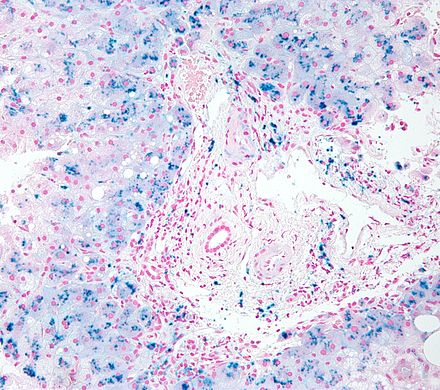WITH PRICELINE PHARMACY
Haemochromatosis (iron overload disorder) is one of the most common hereditary diseases. Around one in 200 Caucasian Australianpeople have a genetic predisposition to this disease – meaning that they may get it.
Haemochromatosis is characterised by the excessive absorption of iron. Normally, excess iron is safely stored in various joints and organs in the body, particularly the liver. In a person with haemochromatosis, iron stores keep rising and, over time, the liver enlargesand becomes damaged, leading to serious diseases such as cirrhosis.
Other problems that can be caused by excessive iron include heart disease, diabetes and arthritis. Both sexes are at risk, but womentend to develop the condition later in life, since regular menstrual periods deplete the body of iron. Haemochromatosis tends to be under-diagnosed, partly because its symptoms are similar to those caused by a range of other illnesses.
Red blood cells contain a protein called haemoglobin, which carries oxygen. Iron is needed for production of this particular protein,and the iron in food is absorbed via the small intestine. The human body has no method of excreting excess iron, so any excess is normally stored in the liver, with no ill effects.
The body typically stores around one gram or less of iron at any given time. However, a person with haemochromatosis absorbs a great deal more iron from their food than is necessary. Iron stores of five grams or more build up inside the body. Organs such as the liver, heart and pancreas are affected and ultimately damaged. Without treatment, haemochromatosis can cause premature death.
Early haemochromatosis has no symptoms. However, in its later stages, haemochromatosis presents a variety of symptoms, and not all people will experience the same signs. Many symptoms
WITH PRICELINE PHARMACY
are similar to those caused by other illnesses, which partly explains why haemochromatosis may be overlooked as a possible diagnosis.Some of the symptoms include weakness and lethar- gy, weight loss, joint pain, abdominal pains, liver dysfunction, disorders of the menstrual period (such as early menopause), loss of body hair and skin darkening.
A person with haemochromatosis is treated with venesection. This is a procedure similar to blood donation, where around 500mls of blood is removed until iron in the blood is reduced to normal levels. Depending on the severity of the condition, this may take around one and a half years of twice-weekly visits.
Once iron levels are normal, venesection needs to be performed three or four times every year for life. If haemochromatosis is treat- ed in its earliest stages before severe organ damage has occurred, there is no reduction in life expectancy – other things being equal. A person with haemochromatosis can better manage their condi- tion by making a few simple lifestyle changes, including not taking iron supplements, not taking vitamin C supplements (vitamin C increases iron absorption), reducing alcohol intake (metabolising al- cohol can stress an alreadycompromised liver), reducing or limiting iron-rich foods such as offal.
You should have a healthy, nutritious diet. This will include foods with the small amount of iron that you continue to need. Haemo- chromatosis cannot be treated by diet.
If a person is diagnosed before significant symptoms arise, they can prevent organ damage and disease symptoms by maintaining iron in thenormal range. Anyone with disorders including liver disease, cardiomyopathy, arthritis or impotence should be tested for haemo- chromatosis. This underlying condition (haemochromatosis) could be causing their secondary illnesses. Prompt treatment can reverse some organ damage and symptoms and prevent further damage.
